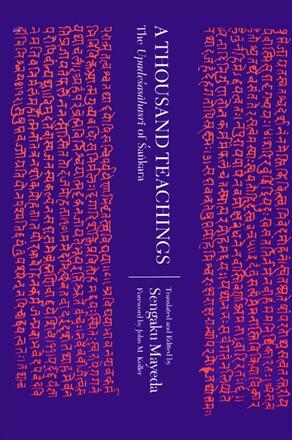
A Thousand Teachings
The Upadeśasāhasrī of Śaṅkara
Alternative formats available from:
Description
This is the best introduction to Vedanta and to Śaṅkara's philosophy. The Upadeśasāhasrī, or A Thousand Teachings consists of a metrical part and a prose part. In the metrical part, Sankara discusses the basic philosophical problems of non-dualism, at the same time refuting the teachings of other philosophical schools. In the prose part, he explains how to teach the way to self realization--to enlightenment.
Śaṅkara and the great Abhinavagupta are generally regarded as the two greatest thinkers in the long history of Indian philosophy. Sankara represented Advaita Vedanta, a non-dualistic view of ultimate reality. Most of his works are commentaries on classics of Indian thought. A Thousand Teachings is the only non-commentarial work that can be attributed to him; the other independent writings ascribed to him are probably spurious.
Sengaku Mayeda, Professor and Chairperson of the Department of Indian Philosophy and Buddhist Studies at the University of Tokyo, is the world's foremost authority on the Upadesaasahasri. With this translation and an extensive introduction to Sankara's life and thought, he makes this classic of Indian philosophy accessible to a wider readership.